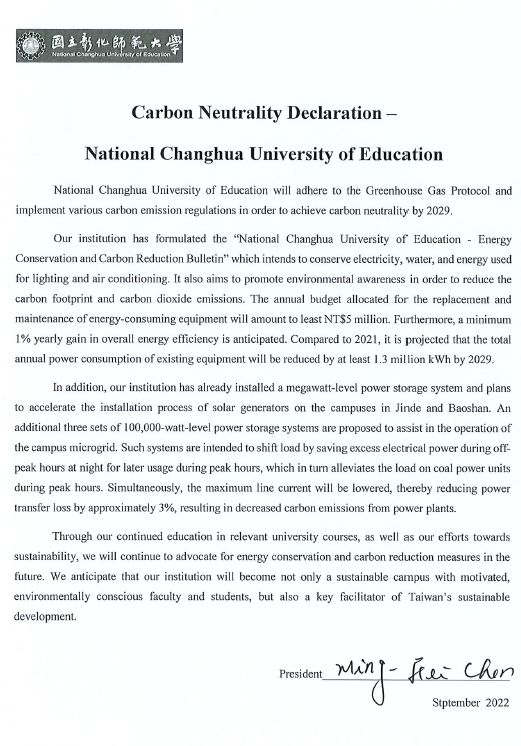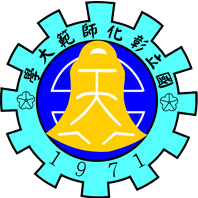SDG7.4.2 100% renewable energy pledge Promote a pledge for 100% renewable energy
NCUE is committed to increasing our renewable energy usage year by year. For example, the planning and installation of a megawatt-size energy storage pilot system in our Bao-Shan Campus not only helped significantly improve the campus’ energy use efficiency; the system is also being used as the foundation for the development of more than 20 research projects related to the topic, including smart grids, microgrid, power electronics, and the strategic management of energy storage equipment. We are constructing an Internet of Things (IoT) smart grid demonstration project on that campus, which will use the energy storage system to adjust and optimise energy usage on campus. We will also install monitoring equipment in various buildings to collect power data with which to research and develop forecasting models on energy usage. By optimising efficiency, we aim to make NCUE an important centre for green energy research.
1. From 2021 to 2022, the roofs of all building on the Baoshan campus will be equipped with solar photovoltaic devices, with a total capacity of 571.5 kW. When supplemented with the megawatt energy storage system, the campus will be able to use 100% renewable energy during daytime in the winter (off-peak hours), as the estimated power consumption, based on past consumption trend, is usually less than 400 kW. The chart below is a simulation of the power consumption on the Baoshan campus following installation of the solar power system. According to the historical records of the electric load of February 23, 2021, in addition to ensuring the power supply of the entire campus during daytime, the additional power generated by the photovoltaic solar system can be stored in the megawatt energy storage system to be used at night.
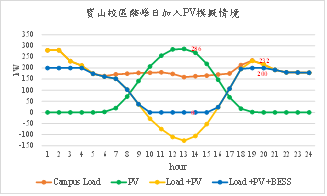
2. It is planned that between 2023 and 2024, additional solar cells, with capacities of 510.04 kWp and 473.14 kWp will be installed at Jinde and Baoshan campuses, respectively. By 2024, the total power generation capacity will exceed the power consumption of NCUE during peak hours. Thus, 100% of the power requirement during normal daytime operating hours will be supplied by renewable energy.
|
|
Year |
Newly Added Capacity (kWp) |
Accumulated Capacity (kWp) |
Power Consumption (peak-hour) |
|
Jinde Campus |
Before 2020 |
467 |
467 |
About 2,800 kWh |
|
|
2021-2022 |
2,085.75 |
2552.75 |
|
|
|
2023-2024 |
510.04 |
3062.79 |
|
|
Baoshan Campus |
Before 2020 |
0 |
0 |
About 900 kWh |
|
|
2021-2022 |
571.5 |
571.5 |
|
|
|
2023-2024 |
473.14 |
1,044.64 |
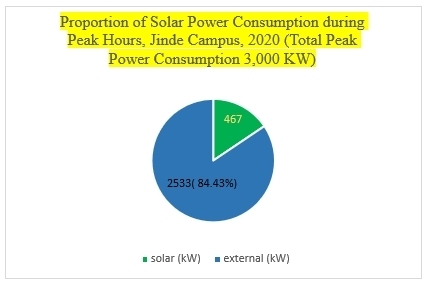
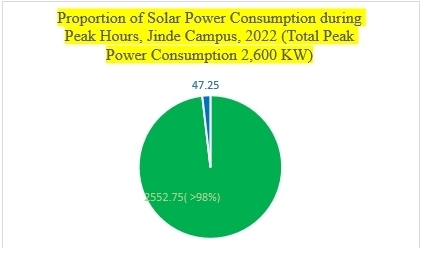
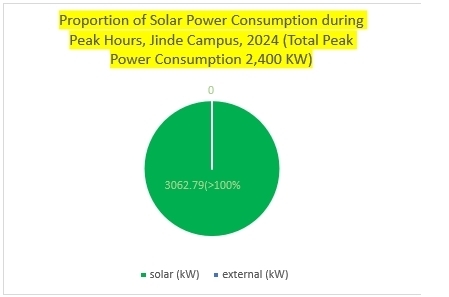
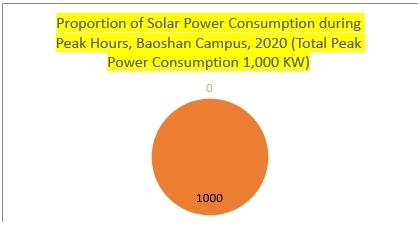
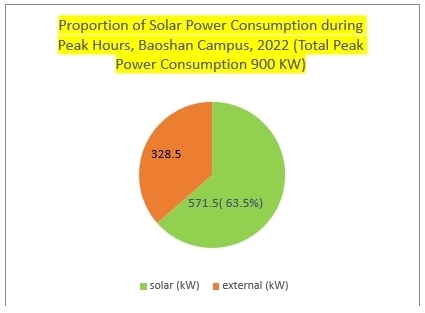
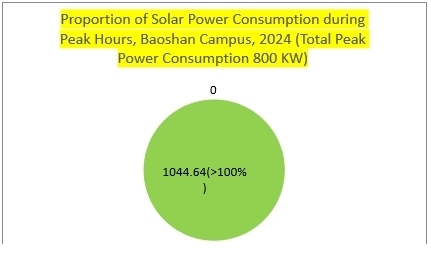
3. Baoshan campus is planning a smart grid project, where a smart energy management system will be run through the main campus microgrids, utilizing the assistance of the #1 sub-microgrid (Sewage Treatment Plant), #2 sub-microgrid (Educational Building), and #3 sub-microgrid (College of Technology) (Figure 1). Each sub-microgrid includes rooftop photovoltaic solar cells and a 100,000-watt energy storage system. The #3 sub-microgrid also includes an electric bus charging station for vehicle-to-grid/grid-to-vehicle (V2G/G2V) battery control applications. Together with smart meters and energy management systems (EMS), the energy storage system is expected to control the net load by partitioning the energy sector to achieve the goal of 100% renewable energy power supply (Figure 2).
NCUE has also considered power usage when weather is unpredictable and lack of sunlight results in a sudden drop in output from the solar power system. Under these temporary conditions, the total energy storage system of 1.3 million watts can be used as the main power supply to ensure a relatively stable power supply of 100% renewable energy (Figure 3).
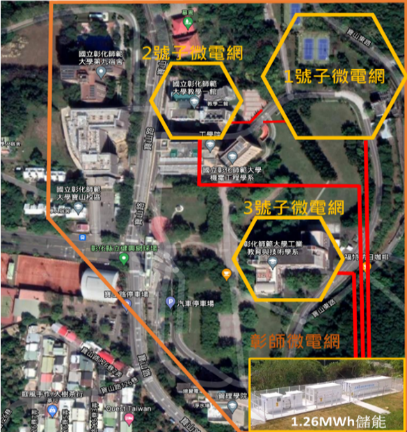
(Figure 1) Campus Microgrid Planning
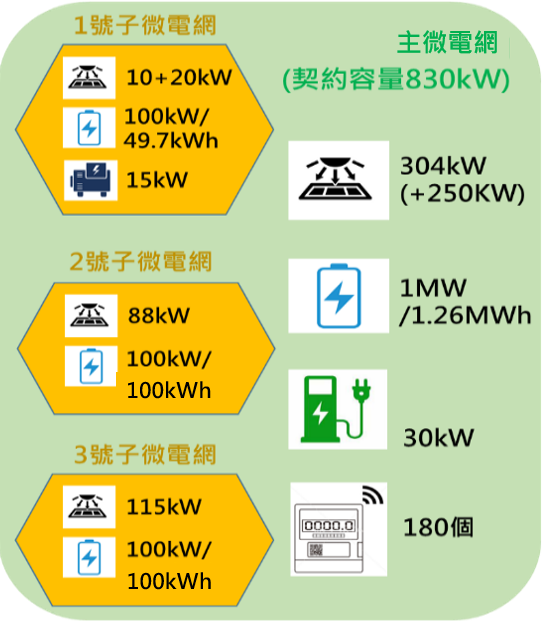
(Figure 2) Planning of the Photovoltaic Solar Power System, Energy Storage System, and Charging Station of Sub-Microgrids

(Figure 3) Solar Photovoltaic Output Smoothing with Energy Storage System
4.On September 29, 2020, NCUE’s chancellor signed the NCUE Environmental Safety and Health Policy, witnessed by members of NCUE’s Occupational Safety and Health Committee. The policy contents are as follows: To build a sustainable green university, all NCUE faculty and staff shall actively abide by the relevant laws and regulations, implement education and publicity, maintain campus safety, prevent disasters from happening, cherish environmental resources, work towards energy conservation and carbon reduction, and strive for pollution prevention and continuous improvement, thereby creating a zero-disaster and pollution-free ecological campus and doing our part as members of the global village.
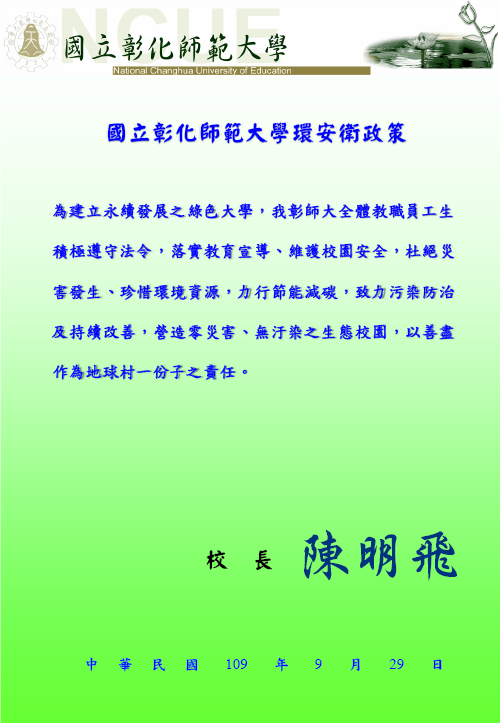
NCUE/Environmental Safety Centre/University-level laws and regulations/NCUE’s Environmental Safety and Health Policy (signed by the chancellor):
https://webadmin.ncue.edu.tw/el/ploy/UploadFiles/934/File/%E7%92%B0%E5%AE%89%E8%A1%9B%E6%94%BF%E7%AD%96%28%E6%96%B0%E7%89%88%29%5B1272%5D.pdf
5.The president of NCUE signed the carbon neutrality declaration in September 2022. The detailed content is as follows:
National Changhua University of Education will adhere to the Greenhouse Gas Protocol and implement various carbon emission regulations in order to achieve carbon neutrality by 2029.
Our institution has formulated the “National Changhua University of Education - Energy Conservation and Carbon Reduction Bulletin” which intends to conserve electricity, water, and energy used for lighting and air conditioning. It also aims to promote environmental awareness in order to reduce the carbon footprint and carbon dioxide emissions. The annual budget allocated for the replacement and maintenance of energy-consuming equipment will amount to least NT$5 million. Furthermore, a minimum 1% yearly gain in overall energy efficiency is anticipated. Compared to 2021, it is projected that the total annual power consumption of existing equipment will be reduced by at least 1.3 million kWh by 2029.
In addition, our institution has already installed a megawatt-level power storage system and plans to accelerate the installation process of solar generators on the campuses in Jinde and Baoshan. An additional three sets of 100,000-watt-level power storage systems are proposed to assist in the operation of the campus microgrid. Such systems are intended to shift load by saving excess electrical power during off-peak hours at night for later usage during peak hours, which in turn alleviates the load on coal power units during peak hours. Simultaneously, the maximum line current will be lowered, thereby reducing power transfer loss by approximately 3%, resulting in decreased carbon emissions from power plants.
Through our continued education in relevant university courses, as well as our efforts towards sustainability, we will continue to advocate for energy conservation and carbon reduction measures in the future. We anticipate that our institution will become not only a sustainable campus with motivated, environmentally conscious faculty and students, but also a key facilitator of Taiwan’s sustainable development.
